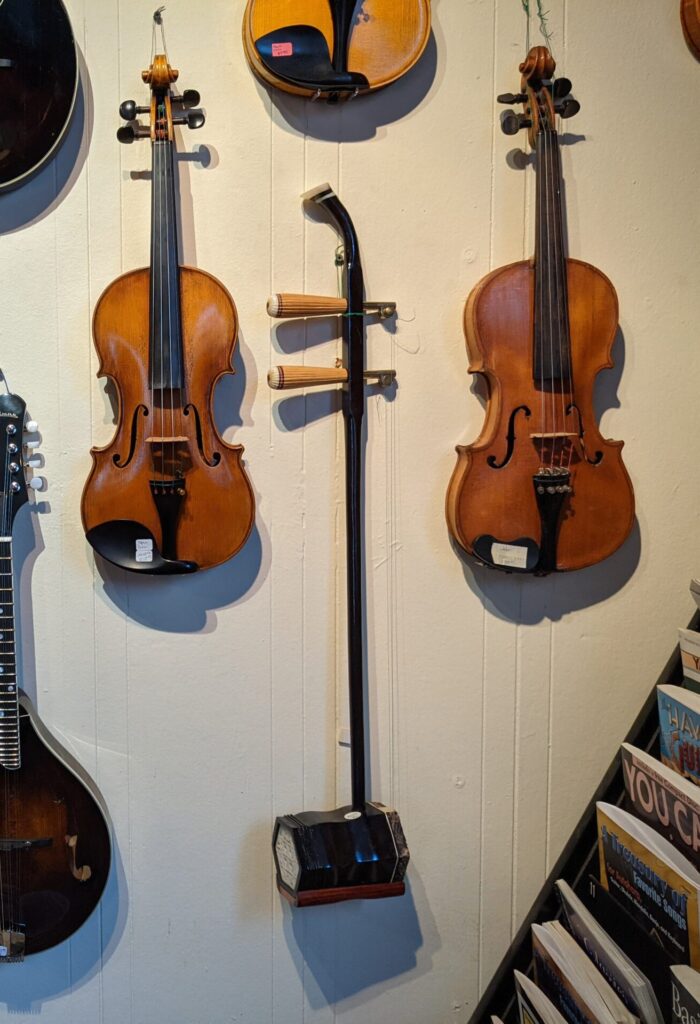
Fiddles at Vintage Music
Also known as violin, the fiddle is a type of bowed stringed instrument that is known for taking the lead on melodies and providing rhythm by means of bowing styles. Early relatives of the fiddle were present in the Middle Eastern rebab family of bowed (and sometimes plucked) lutes that dates to the eighth century. As the fiddle traveled along trade routes from the Middle East and into North Africa, Europe, and Asia, each place’s unique culture shaped the instrument with new features. The modern fiddle as we know it—having a shallow wooden body with small f-shaped sound holes, strings tuned in intervals of fifths (GDAE), and played with a bow made with horsehair—developed in the fifteenth century in Cremona, Italy. Further east, bowed instruments such as the erhu in China developed from some of the same instrument relatives.

Erhu close-up
Rebab playing demonstration
Fiddles were brought to the Americas in the seventeenth century. The first written record of the fiddle contests, or conventions, in the South dates to the mid-eighteenth century. Although the first fiddles came with European immigrants, who played songs including reels and jigs, fiddles also became a strong part of African American music tradition in Appalachia, particularly in dance contexts. In old-time dance music, fiddles are often tuned to different cross-tunings (example: the G and D strings are tuned up to AE for a ‘cross-A’ tuning of AEAE), resulting in a sound with resonance and drone. Bluegrass fiddling typically uses standard tuning and is characterized by prominent melodic lines that are often improvised on during a solo. It also features less variation in bowing styles.
Listening
JOKE
Q: What’s the difference between a violin and a fiddle?
.
.
.
.
.
.
.
.
A: One has strings, the other has strangs.
REFERENCES
“American Roots Music : Instruments and Innovations – The Fiddle.” PBS. Public Broadcasting Service, 2001. https://www.pbs.org/americanrootsmusic/pbs_arm_ii_fiddle.html.
Blaustein, Richard. The Thistle and the Brier: Historical Links and Cultural Parallels Between Scotland and Appalachia. Jefferson, N.C: McFarland & Co, 2003.
“The Historical and Cultural Significance of Fiddle Tunes of the Old Frontier.” The Library of Congress. Accessed February 12, 2021. https://www.loc.gov/collections/henry-reed-fiddle-tunes/articles-and-essays/the-historical-and-cultural-significance-of-fiddle-tunes-of-the-old-frontier/.
“The Origins of the Violin: the Birth of the Violin.” Musical Instrument Guide – Yamaha Corporation. Accessed January 25, 2021. https://www.yamaha.com/en/musical_instrument_guide/violin/structure/#:~:text=The%20Arabian%20rabab%20and%20the,a%20fiddle%20appeared%20in%20Europe.
